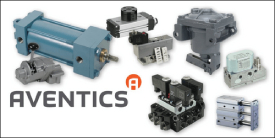The amplifier operates with a push-pull output stage with bipolar transistors. The output of this output stage can be connected or disconnected by means of an enable circuit (relay K2). The enable is indicated by the LED "H2" on the front plate being illuminated. The switching voltage of all relays is defined by means of jumpers J12 and J13 to either 0 V or +UB (factory +UB).
The output stage consists of an I controller with connected dither signal generator. The amplitude of the dither signal is set by means of R7. The actuation of the pre-stage (current command value) is made via a PD controller. The actual current value returned is simultaneously indicated by the instrument on the front plate.
The oscillator/demodulator serves for position sensing. It is designed as pluggable printed circuit board the parameters of which are adapted to the respective size of the axial piston unit.
The PD controller is supplied the position command value and the position command value and the actual position value with the D share of the controller only affecting the actual value (velocity feedback).
The zero point can be set via R3 ("NP") from the front plate.
The required symmetric operating voltage +UB is protected against reversed polarity. If the board is not equipped with any voltage regulators for supply of the controller and position transducer electronics, an additional stabilized auxiliary voltage ±UM is required. The auxiliary voltage port is protected against reversed polarity up to a maximum current of 1 A.
As an option, the amplifier can be equipped with a PID controller (D share only affects the actual value). This controller can be used to superimpose a further control loop (e.g. for drive control). The P and D share can be set at the front plate. The PID controller fitting is customer-specific and therefore has to be specified in the order in plain text. These amplifiers receive a special type designation upon delivery.











